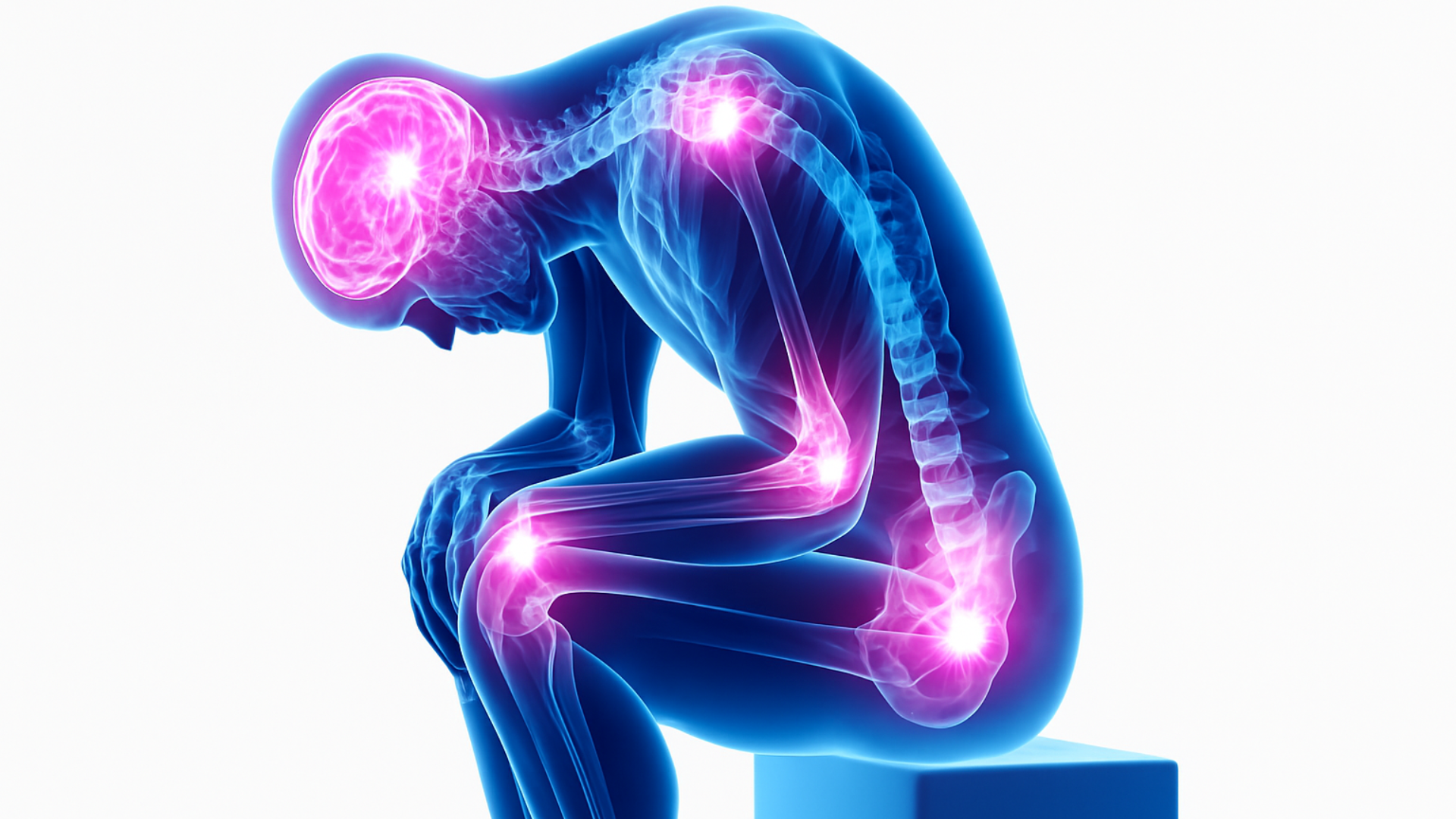When the Body Speaks: Understanding Conversion and Somatization through a Trauma-Informed Lens
Imagine living with chronic pain, mysterious neurological symptoms, or digestive issues — and every test comes back “normal.” What if these symptoms aren’t simply medical puzzles, but messages from the body trying to tell a deeper story?
In trauma-informed therapy, we understand that the body holds experiences, sometimes in ways that bypass our conscious awareness. One powerful example of this is conversion disorder, historically referred to as "hysteria" in the early 1900s. Though today it is less dramatically portrayed, its modern counterparts — chronic pain, somatization, fibromyalgia, and certain neurological symptoms — continue to affect countless individuals.
What Is Conversion or Somatization?
Conversion refers to physical symptoms—such as paralysis, muteness, or seizures—that cannot be explained by medical evaluation but are very real to the person experiencing them.
Somatization involves chronic physical complaints that may not follow a clear medical pattern, such as pain, fatigue, or gastrointestinal issues.
“Somatization is a perfect way to hide memories, especially from one’s self.”
— Janina Fisher (2009)
In other words, the body can become a container for pain the mind isn’t ready to process.
Are These Symptoms Adaptive?
From a neurobiologically-informed perspective, we no longer assume these symptoms are simply pathological. Instead, we ask: What function do they serve?
Are they “memory equivalents” for trauma the mind can't yet recall?
Do they represent survival strategies the body developed to cope?
Are they ways the nervous system maintains a sense of safety?
In this light, physical symptoms may serve to protect us—until we’re ready to process what lies beneath.
What Do Conversion Symptoms Look Like?
According to Fisher (2009), conversion and somatic symptoms may fall into several categories:
Sensory Symptoms
Numbness or anesthesia
Heightened sensitivity to light, noise, or touch
Tingling, crawling, or cold sensations
Sudden vision or hearing loss
Motor Symptoms
Tremors, tics, or paralysis
Mutism or changes in vocal ability
Disorganized movement
Visceral Symptoms
Swallowing difficulties
Chronic coughing, vomiting, or reflux
Pain Symptoms
Headaches, back pain, fibromyalgia
Pain in the limbs or joints
Chronic fatigue
How Does Trauma Become Physical?
Physician and trauma researcher Robert Scaer (2001) studied whiplash injuries and found that most people recovered quickly—except those with a trauma history. In those individuals, the accident appeared to activate unresolved trauma stored in the body, resulting in chronic symptoms.
He noted that trauma can trap the body in a cycle of autonomic dysregulation:
Sympathetic arousal (fight or flight): muscle tension, jaw clenching, rapid heartbeat, hypervigilance, panic
Parasympathetic dominance (freeze or submit): nausea, dizziness, diarrhea, faintness
Scaer concluded that for some, “The syndrome of trauma has now literally taken control of the body.”
Dissociation and the Compartmentalized Self
According to psychiatrist Judith Herman (1992), when neither fight nor flight is possible, the mind can fragment into “altered and exaggerated” defensive states. This is known as structural dissociation—a way the psyche separates traumatic experiences from everyday functioning.
Fisher (2009) explains that parts of the self holding trauma may remain hidden, even from consciousness, expressing their distress only through physical symptoms. This is why chronic pain and somatic symptoms can be so challenging to treat—they’re the body’s language of survival.
The Body Remembers: Trauma’s Physical Map
Different survival responses are mapped across the body:
Attach (cry for help): eyes, hands, larynx
Submit (collapse/numb): digestive system, low muscle tone
Freeze (terror): extremities
Flight: legs, feet, adrenals
Fight: jaw, shoulders, arms
These bodily responses reflect past experiences and prepare us for anticipated threats—even when there is no current danger. As Dan Siegel (2006) puts it, “Memory shapes how we experience the present and how we anticipate the future.”
A Hidden Narrative
Many individuals living with somatic symptoms are high-functioning and deeply resilient. Yet, beneath the surface, they often carry unresolved trauma. Pain becomes a kind of perpetrator, preventing them from living the life they want: “If it wasn’t for the pain, I could live a normal life.”
Understanding this hidden narrative is key to compassionate, effective treatment.
If You or Someone You Know Is Struggling
If you're experiencing chronic physical symptoms with no clear medical explanation, you're not alone—and you're not imagining it. The body may be telling a story that deserves to be heard, held, and healed.
At our clinic, we offer trauma-informed care that listens to both your words and your body. Reach out—there is hope for relief and restoration.
References:
Fisher, J. (2009). Psychoeducational Aids for Treating Psychological Trauma.
Herman, J. (1992). Trauma and Recovery.
Scaer, R. (2001). The Body Bears the Burden: Trauma, Dissociation, and Disease.
Ogden, P., Minton, K., & Pain, C. (2005). Trauma and the Body: A Sensorimotor Approach to Psychotherapy.
Siegel, D. (2006). The Mindful Brain.
Yehuda, R. (2004). “Biological Factors Associated with Susceptibility to Posttraumatic Stress Disorder.” Psychiatric Clinics of North America.
Written by Dr. Jennifer Menon, Clinical Psychologist
BA (Psych), DipPsych, DClinPsych, MAPS


